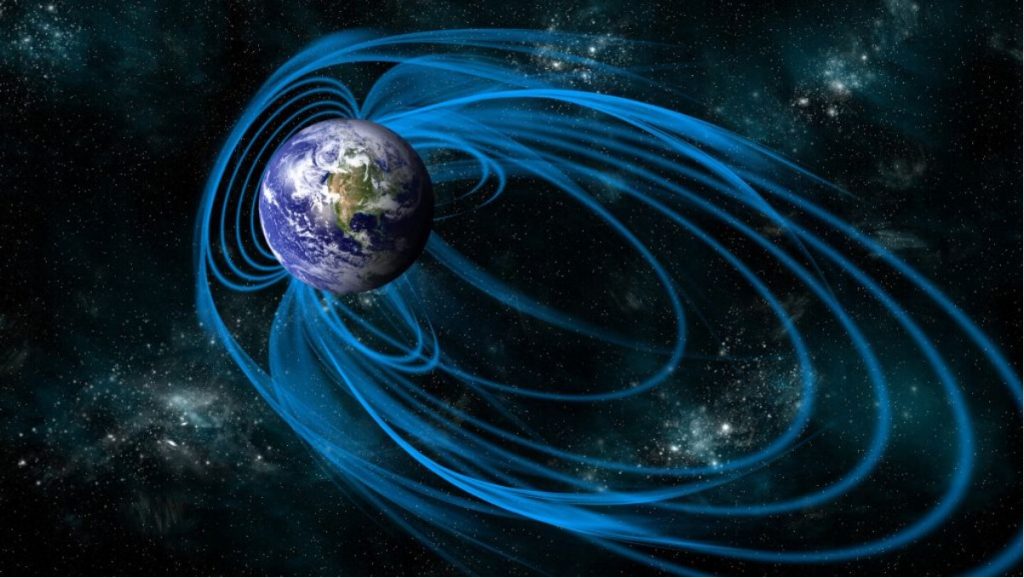The Earth’s magnetic field protects us from the solar wind by deflecting the charged particles.
And according to new data, the Earth’s magnetic north pole, which has been wandering faster than expected in recent years, has now crossed the prime meridian.

The Earth’s Magnetic North is moving from its previous home in the Canadian Arctic toward Siberia at a rate of about 34 miles (55 kilometers) a year over the past two decades. And this movement will continue, though likely at a slower rate of 25 miles (40 km) each year, as shown in the latest data.
Why is Earth’s magnetic north drifting?
Earth’s magnetic field is produced by the churning of the planet’s iron outer core, which produces a complex, but largely north-south magnetic field.
For reasons not entirely understood but related to the planet’s interior dynamics, the magnetic field is currently undergoing a period of weakening. That’s why magnetic north is drifting.
As of February 2019, magnetic north was located at 86.54 N 170.88 E, within the Arctic Ocean. On the other side of the globe, the magnetic south similarly does not line up with geographic south. It was at at 64.13 S 136.02 E off the coast of Antarctica as of February 2019.
World Magnetic Model Updates
Scientists release a new version of the World Magnetic Model every five years, so this 2020 update was expected.
The 2020 model shows the “Blackout Zone” around magnetic north where compasses become unreliable and start to fail because of the proximity of true north.
The new maps also show magnetic north east of the prime meridian, a boundary the pole crossed in September 2019.
The prime, or Greenwich, meridian is the meridian that was set as the official marker of zero degrees, zero minutes and zero seconds in 1884. It runs through the Royal Observatory at Greenwich in England.
In February 2019, though, they had to release an update ahead of schedule due to the fast clip of magnetic north’s movements.
Is a poleshift ahead?
It’s currently unclear whether Earth’s magnetic poles are headed for a flip-flop — switching north and south — or whether the magnetic field will soon strengthen again.
Both events have happened in Earth’s history without any notable effect on biology.
However, modern navigation systems rely on magnetic north and will have to be recalibrated as the poles continue to wander.
The World Magnetic Model is used to calibrate GPS and other navigation measurements. For example, airports have already had to rename some of their runways, which have names based on compass directions. [LiveScience]













Clearly this is the fault of the Russians! Are they not at the root of everything happening on the planet right now? I can easily see everyone in Washington spending the next century blaming a pole shift on them. LOL, but it could happen.